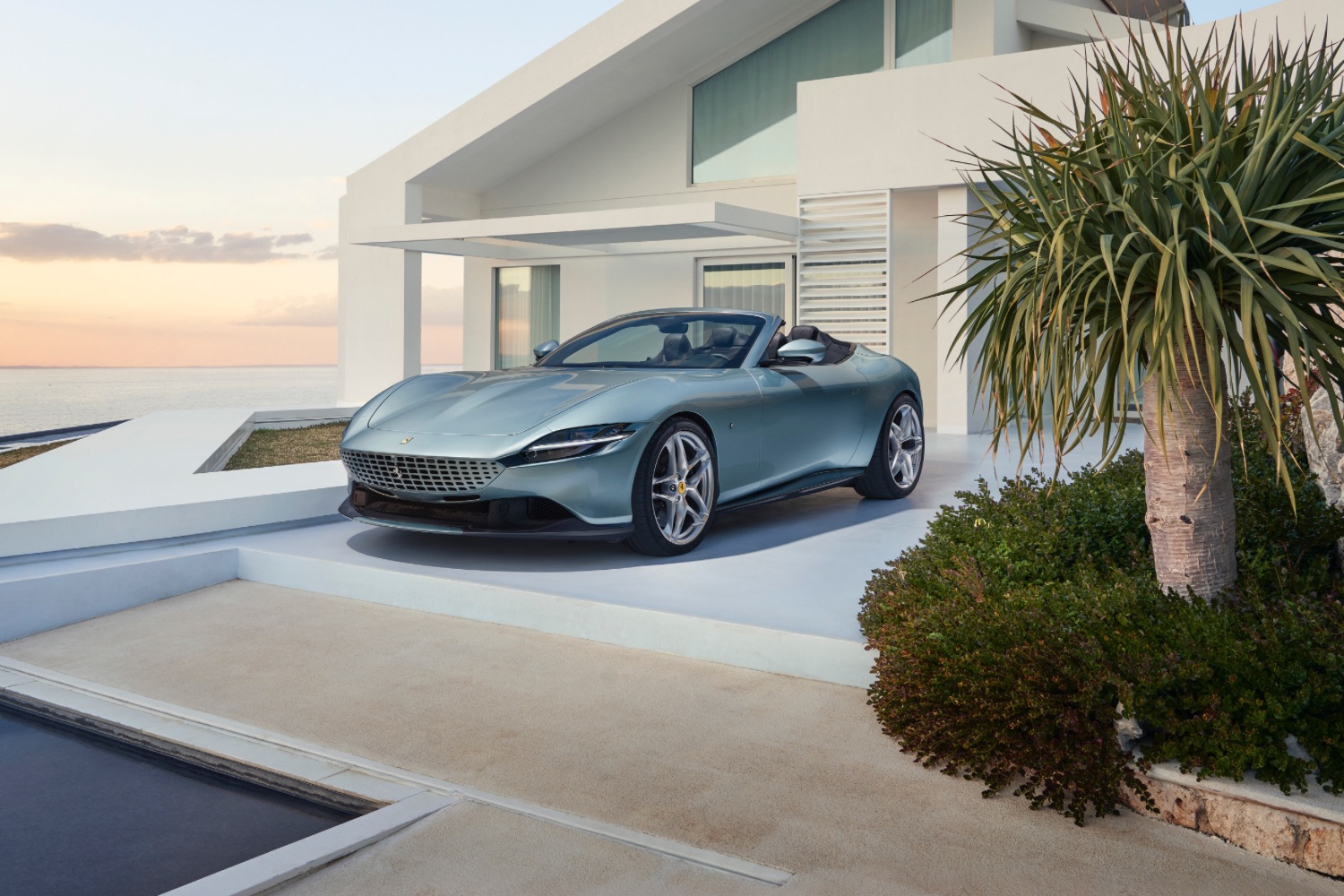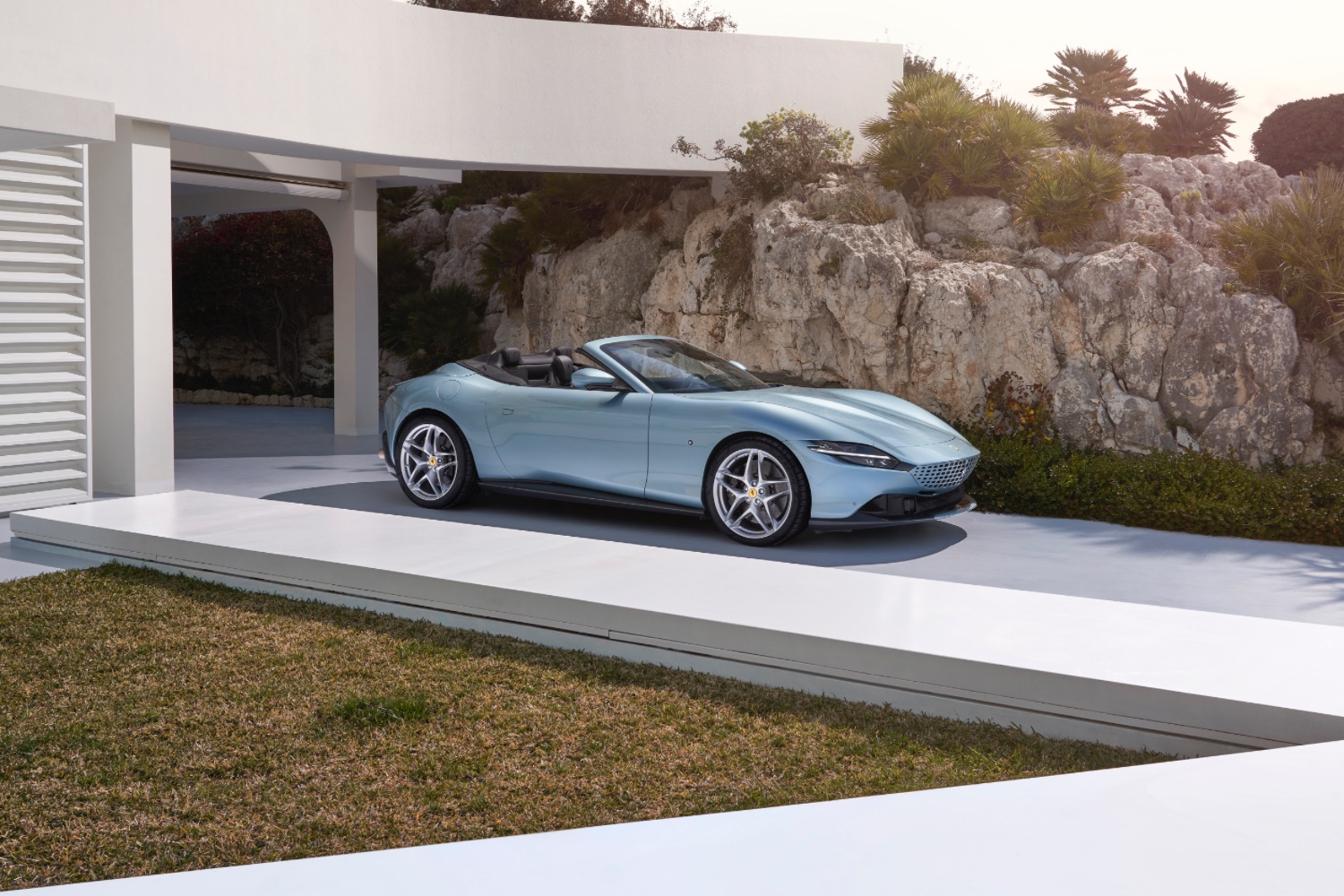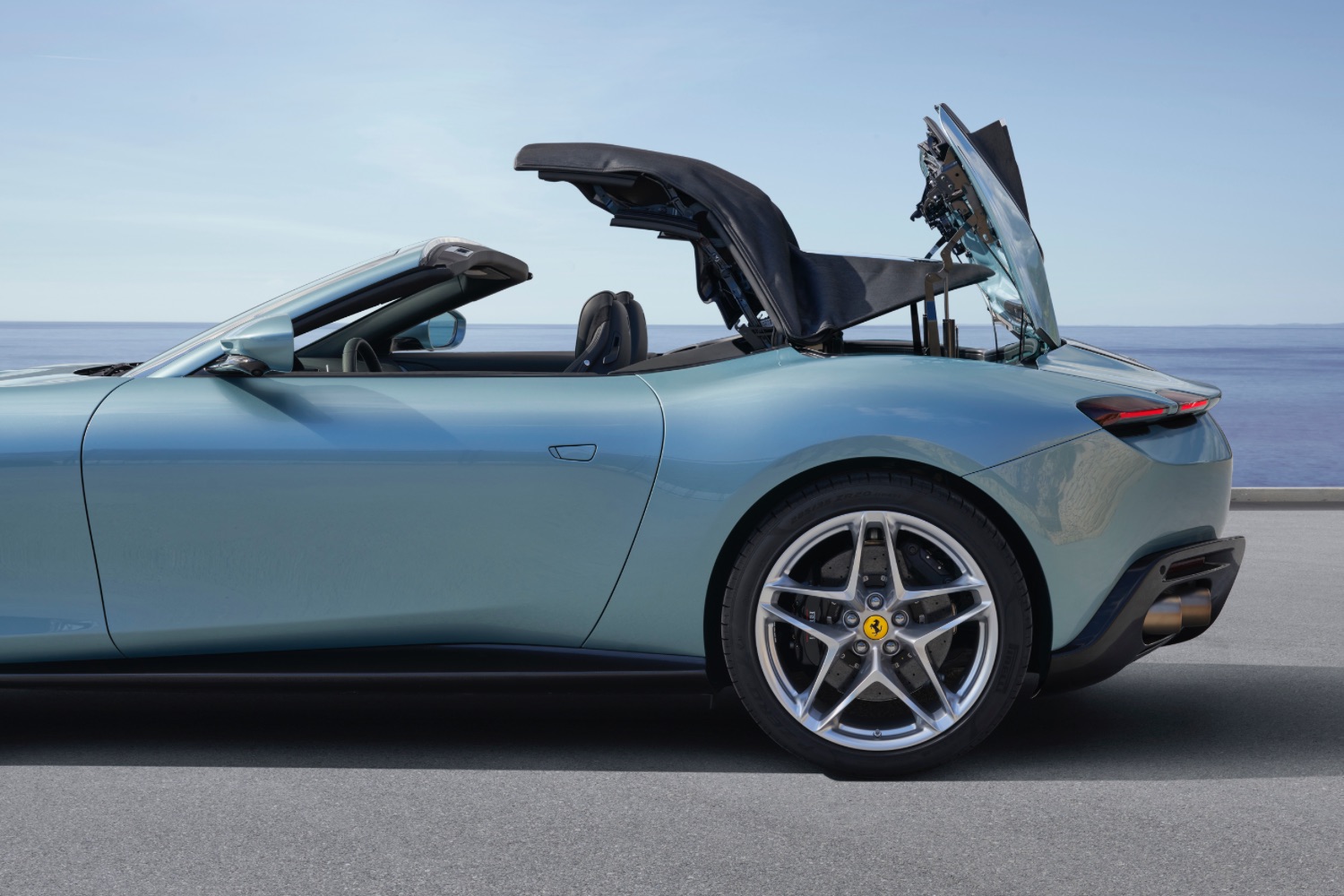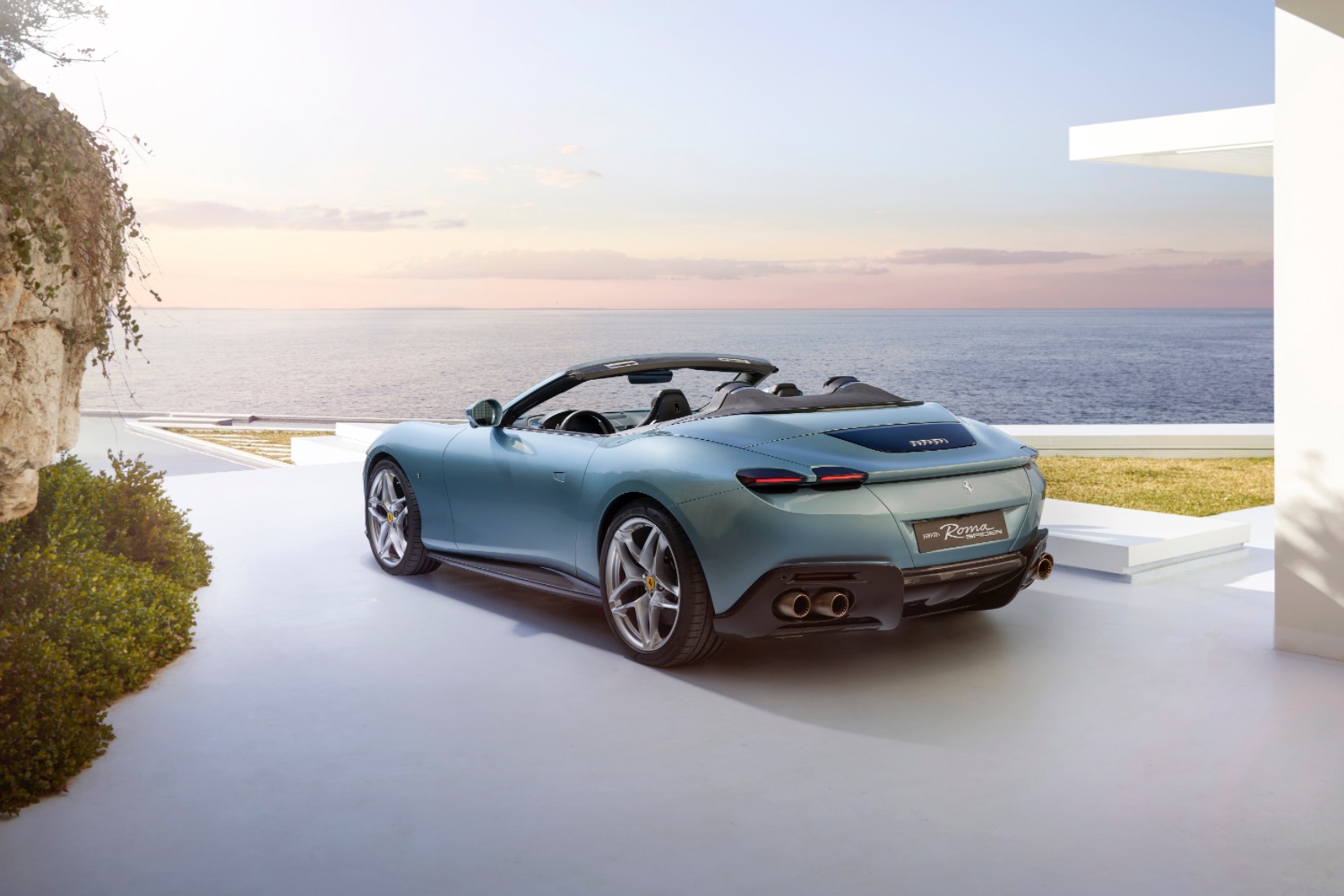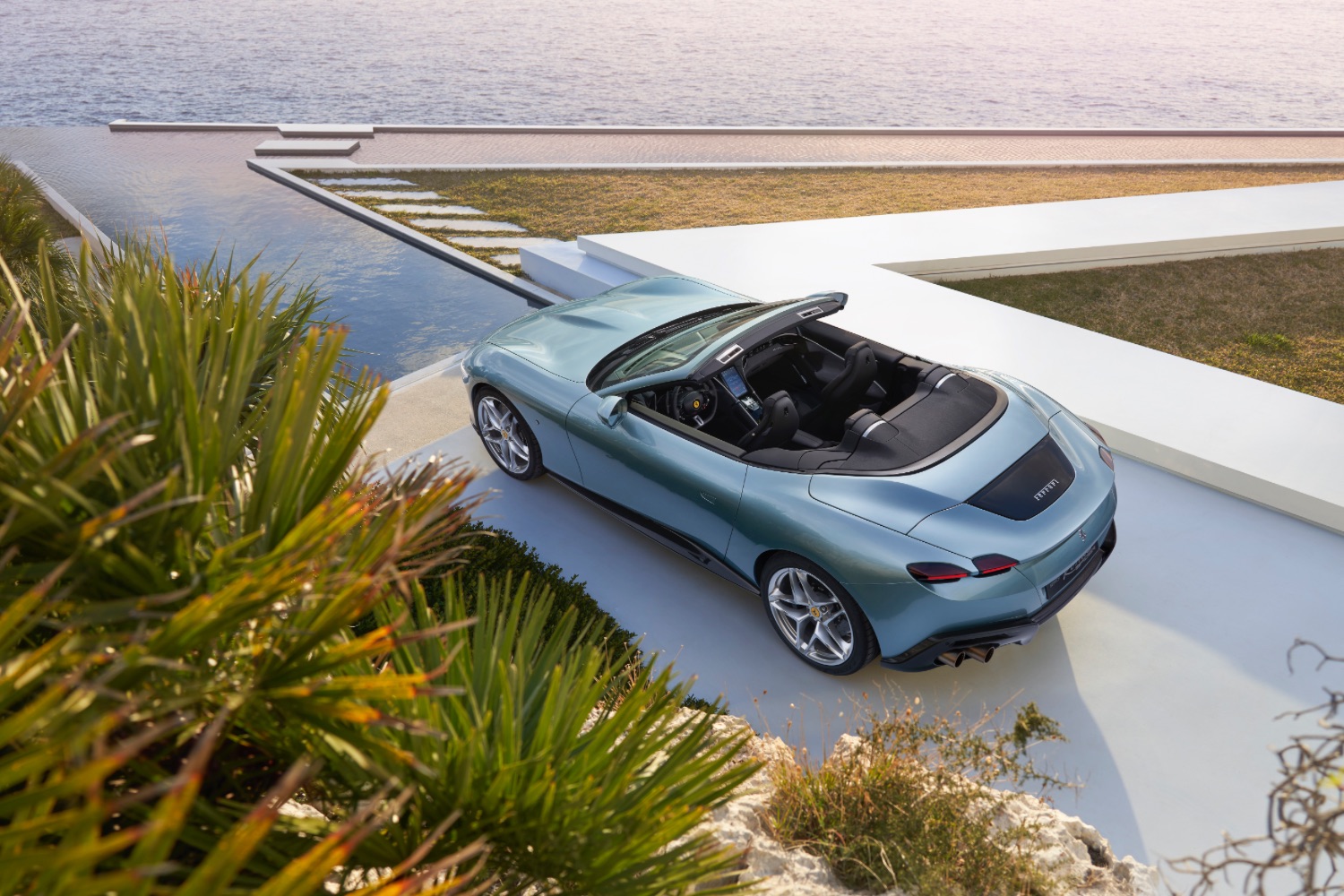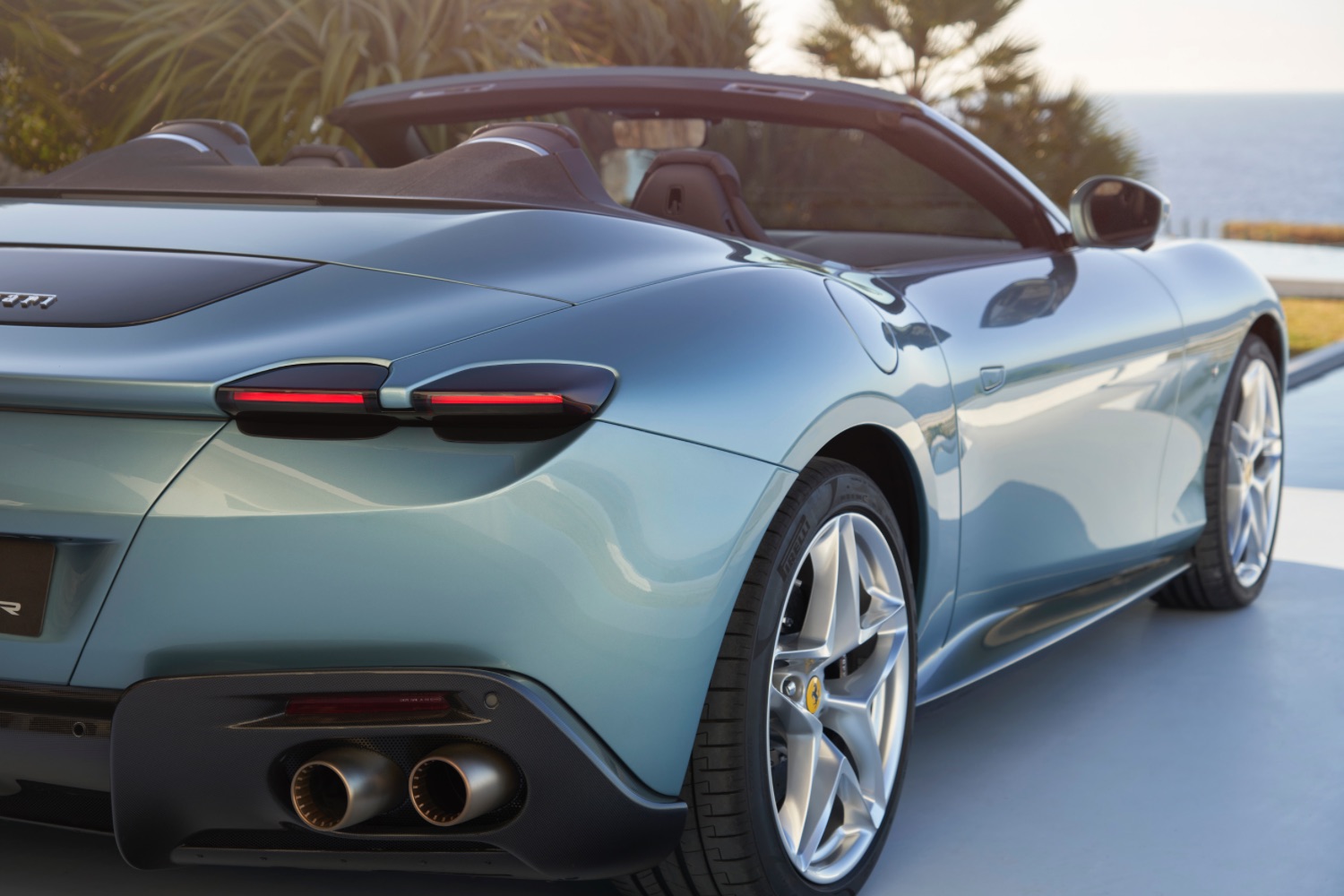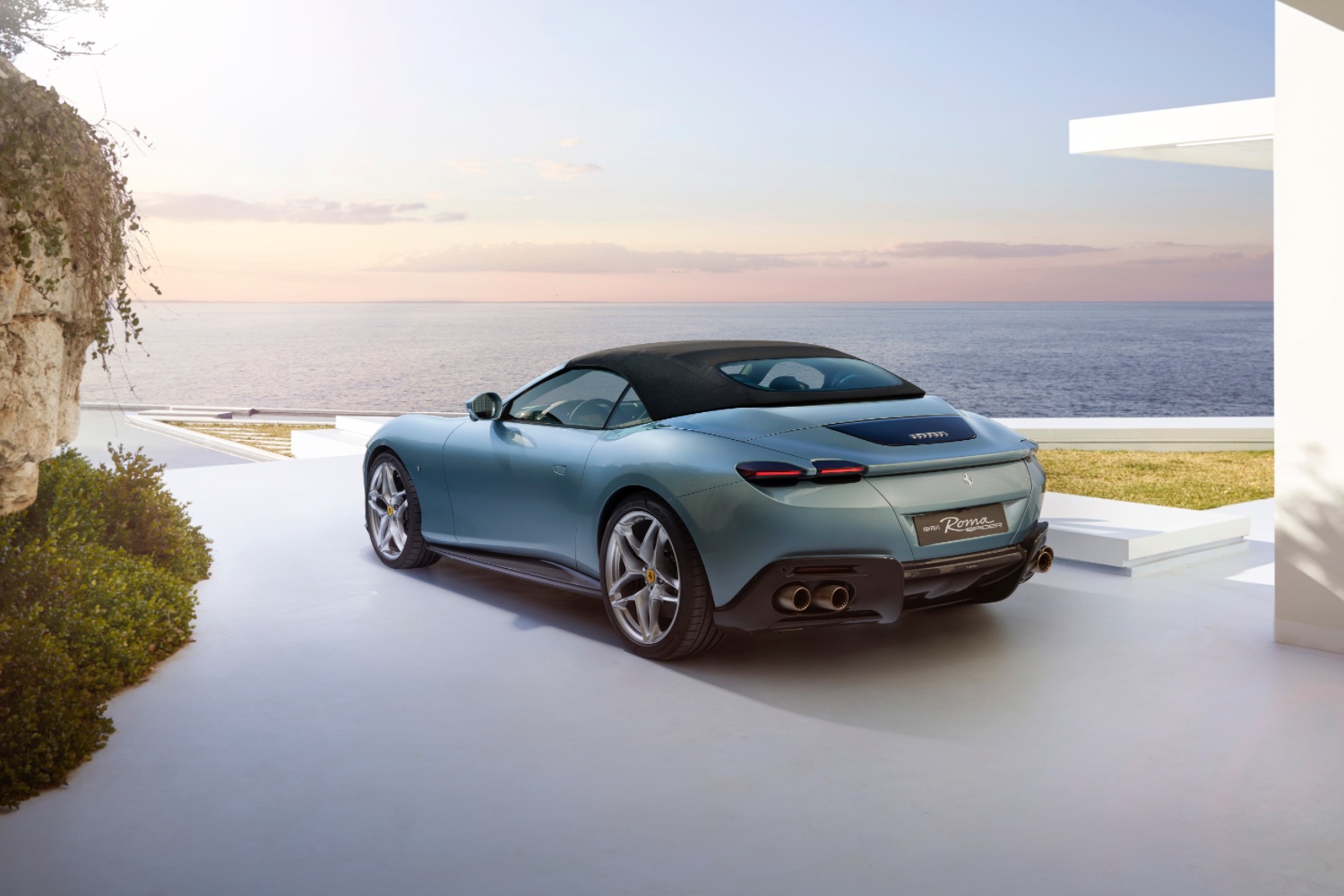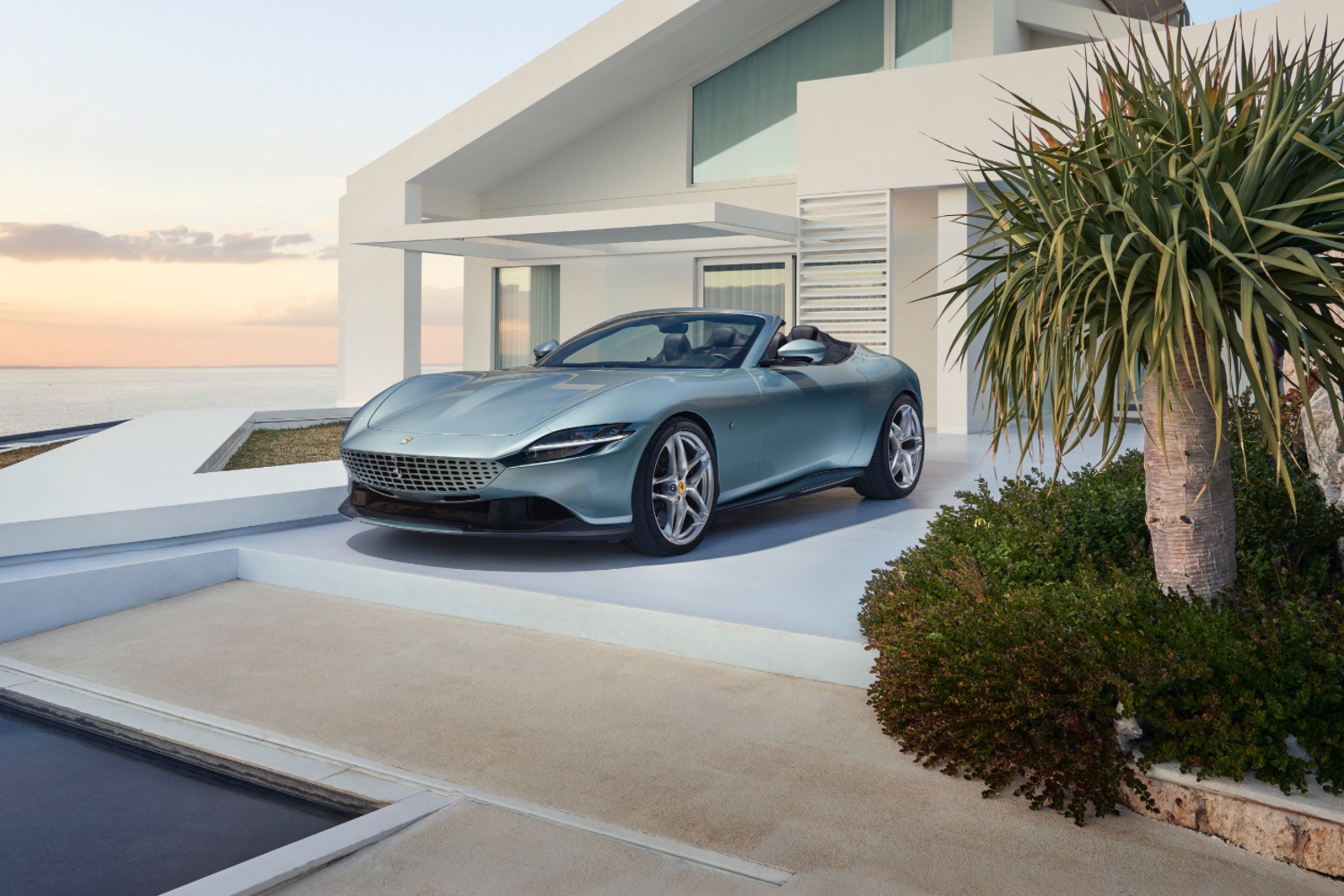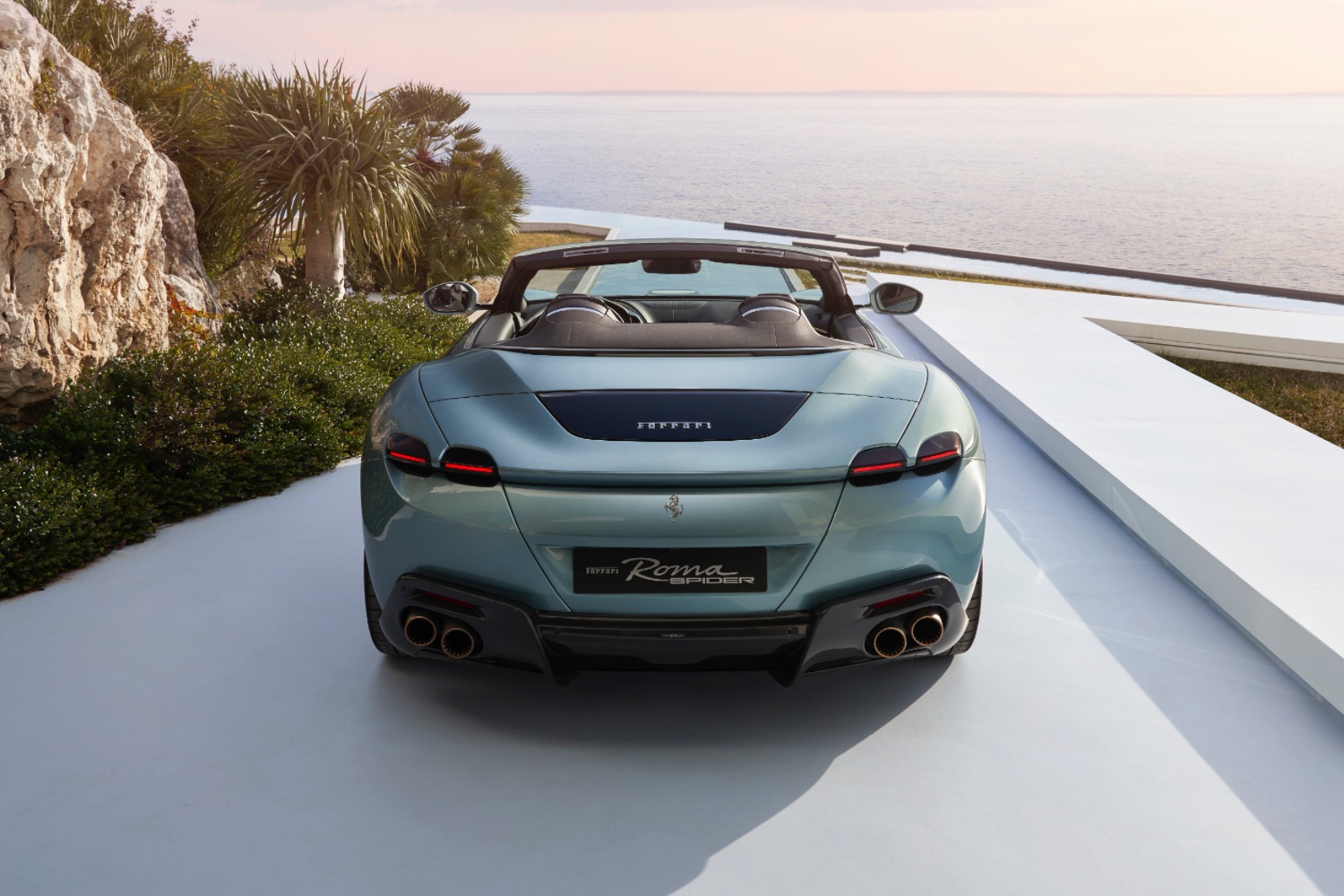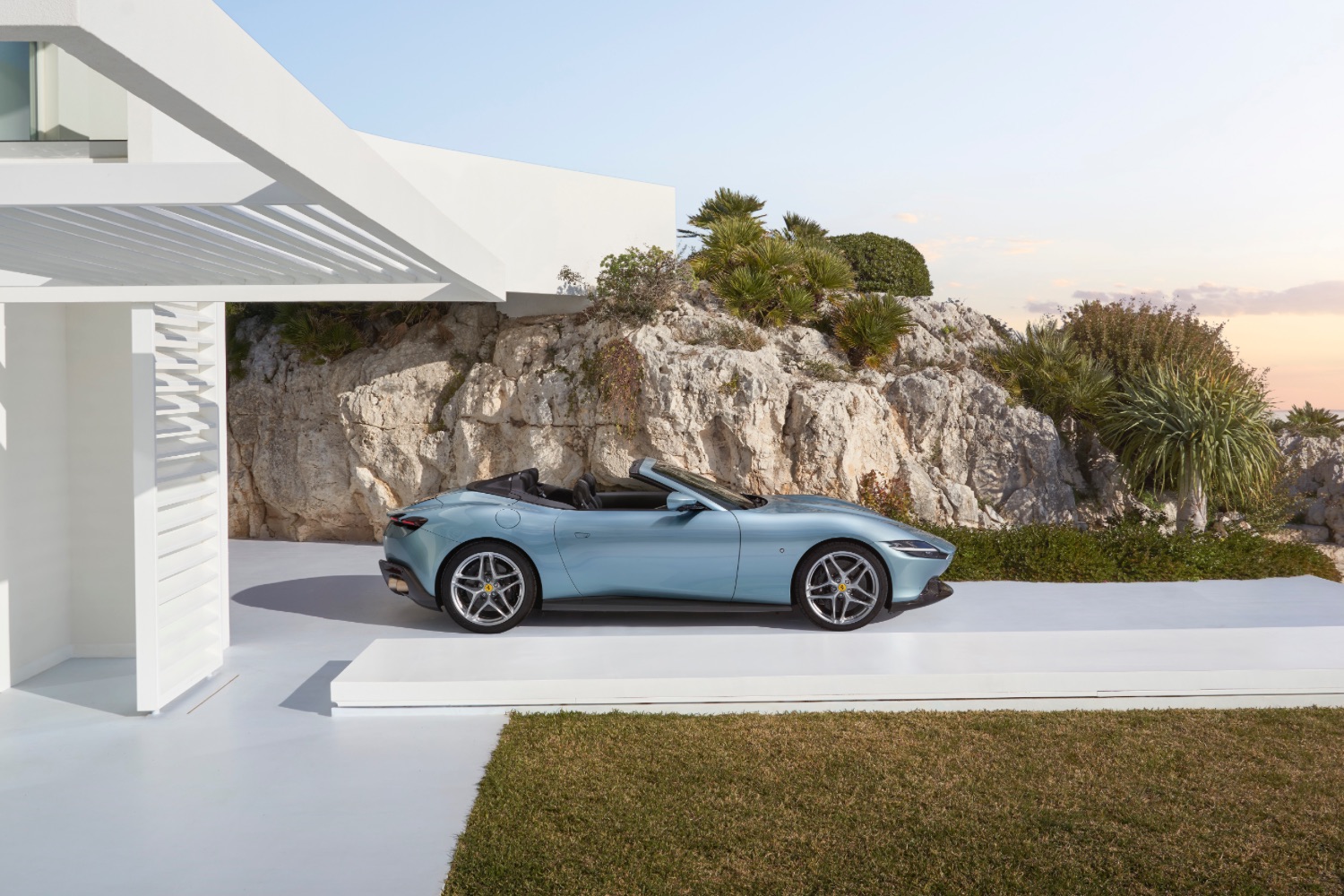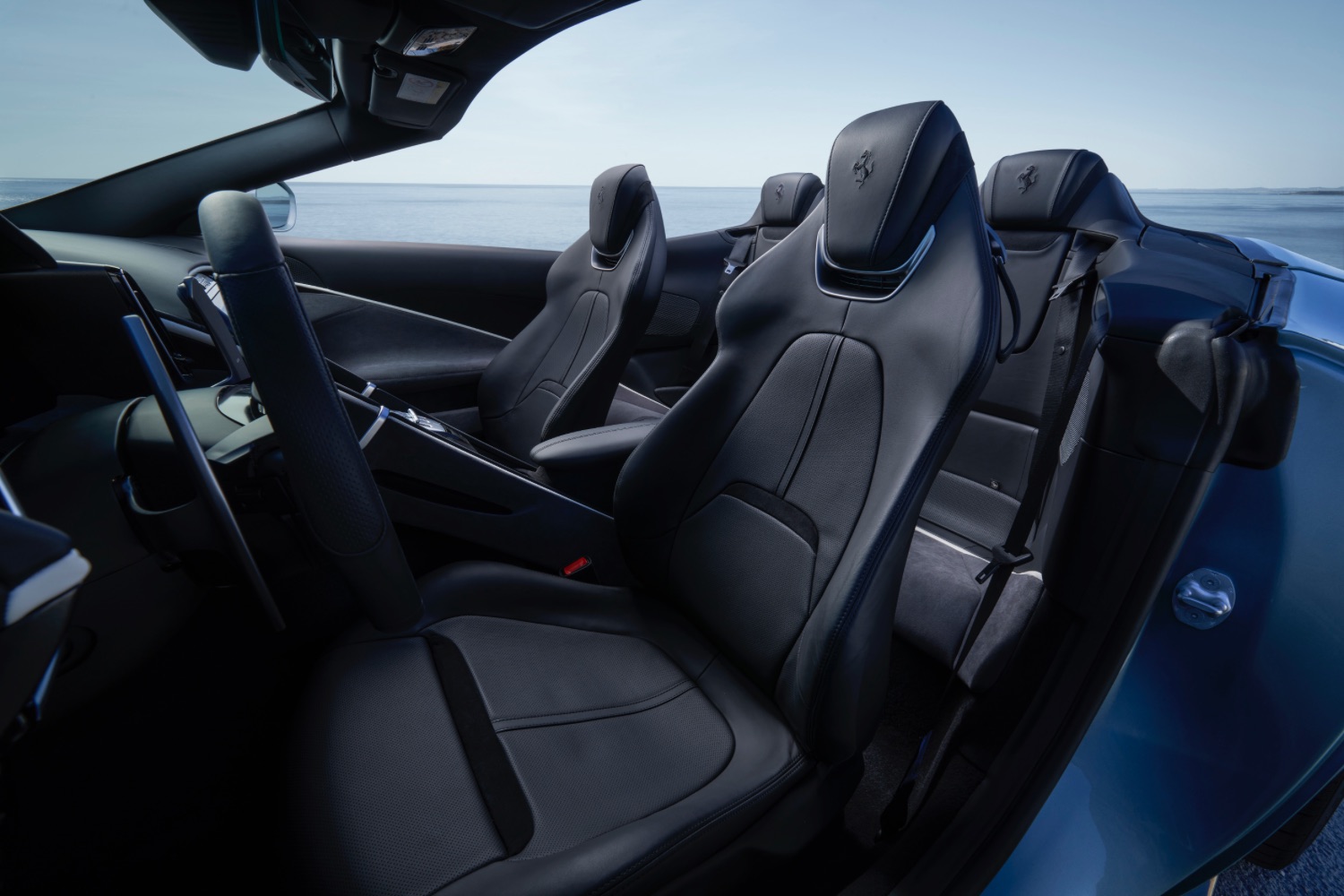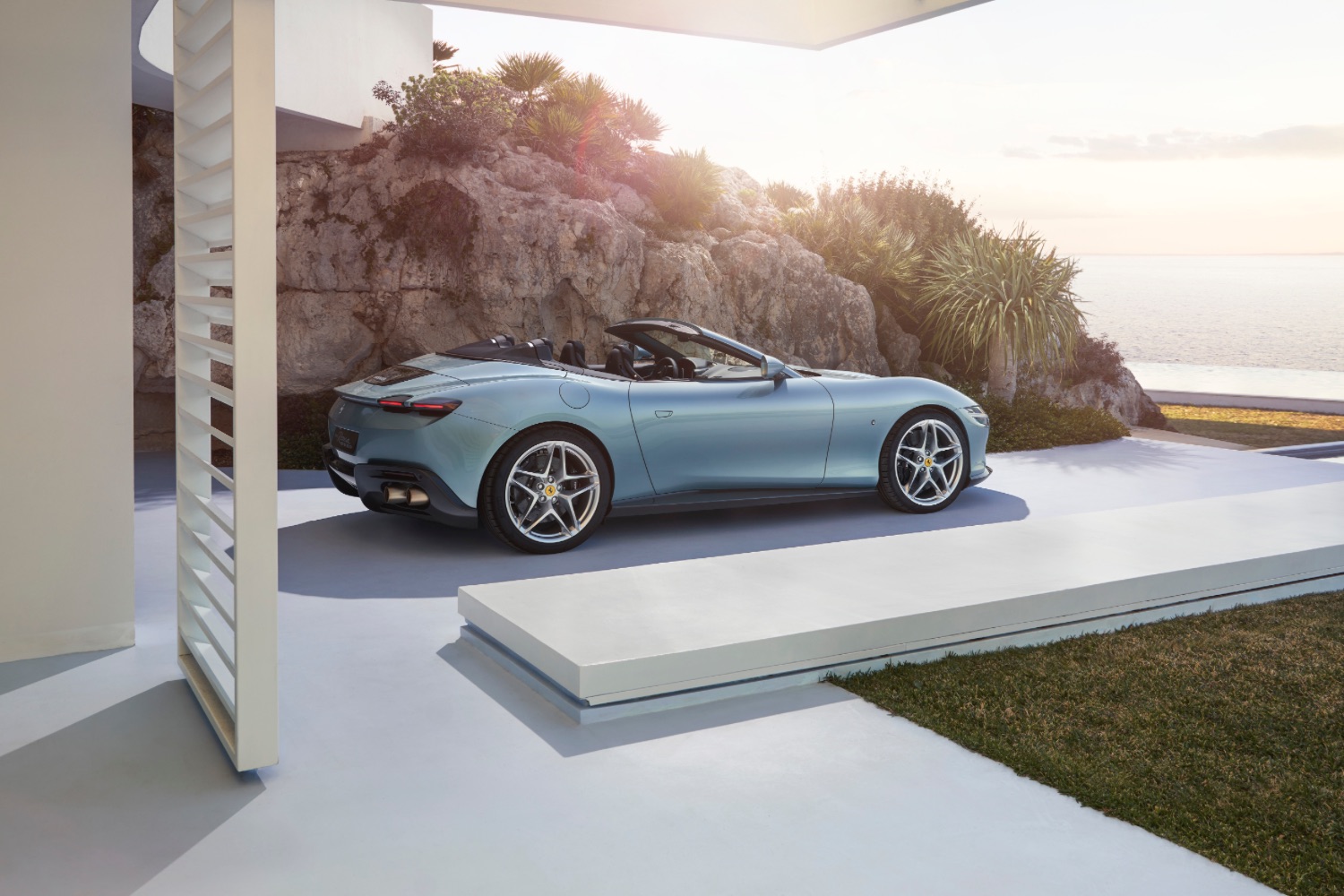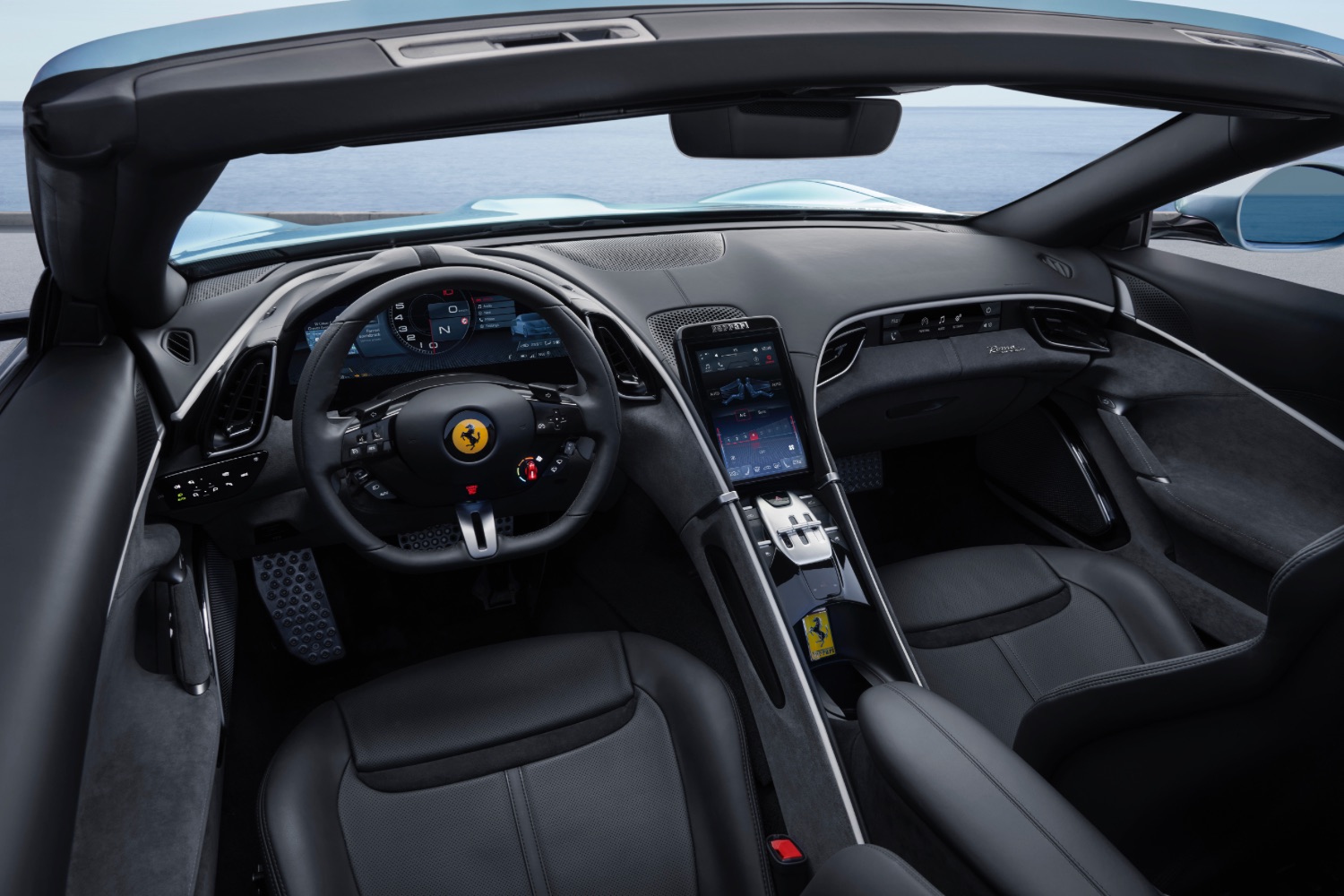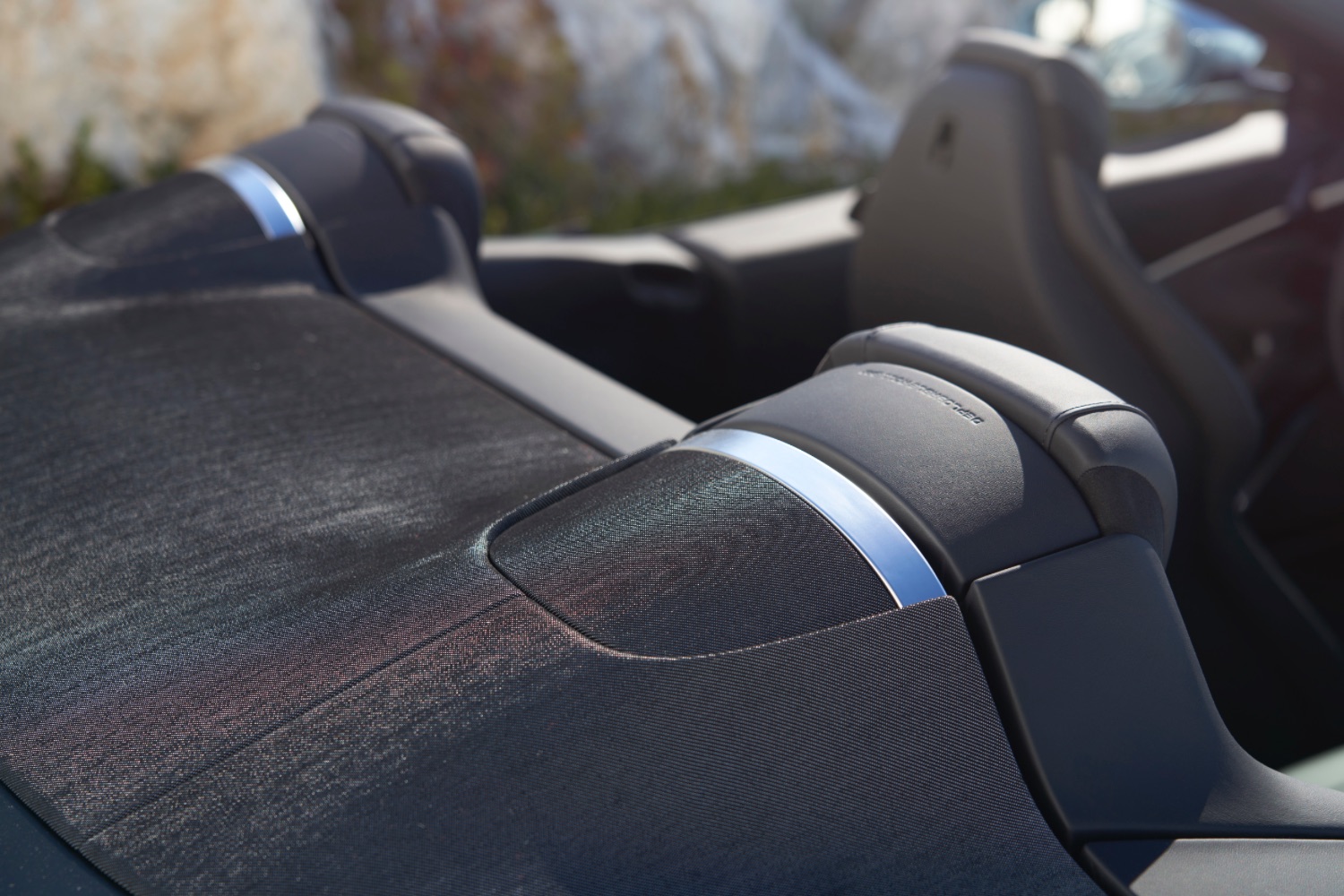How do you make an already achingly desirable Ferrari even more so? Simple - chop the roof off. Ferrari's convertible models tend to be slightly rarer and more sought-after than the hard tops (a tip for future investors there), and that looks set to continue with the Roma Spider.
Four-seat layout
Based on the really, really, really, really, ridiculously good-looking (copyright D. Zoolander) Roma coupe, the Spider keeps the four-seat layout of the coupe, but, realistically, those back seats are going to be well-upholstered luggage spaces - real humans are unlikely to fit.
In styling terms, the Spider keeps the low-slung nose of the Roma coupe, with its distinctive egg-cutter grille and impossibly slim lights. The roof is a soft fabric affair, not a folding hard top. It has been designed by Ferrari Styling Centre boss Flavio Manzoni to: "enhance the flawless proportions of the coupé on which it is based without modifying that car's elegantly flowing silhouette."
If we're nit-picking, it looks better roof up than roof down, as there's a distinct hump shape behind the seats where the folded roof is stored, which looks less than perfectly elegant, but we're still talking about a very pretty car here. Part of the issue is that Ferrari wanted to keep the Roma coupe's sleek rear screen, so the roof and the glass actually separate as everything folds back. Ferrari says it has 're-proportioned' the car's rear to fit the convertible mechanism.
Roof works at up to 60km/h
Even so, it's a speedy roof, tucking away in 13.5 seconds at speeds of up to 60km/h. The roof fabric is also a bespoke two-tone weave, which can optionally be given a red iridescence that sparkles in the sun.
There are also new brake lights, which look more minimalist than the coupe.
The Roma's cabin takes inspiration from the 1970s, with the two front seats separated into discrete cockpits. That said, those two cockpits are symmetrical in shape, which Ferrari claims means that "the passenger will feel very involved in the driving experience - almost like a co-driver, in fact."
The leather, at least in these first images, is spare and simple and highlighted by piping elements, but hopefully, the retro-style seats seen in the coupe, with their heavy 1970s-style ribbing, will be available as an option. The driver gets a fully digital instrument panel under a binnacle, while in the centre of the dash is a portrait-oriented 8.4-inch touchscreen for the infotainment system.
As with the coupe, the gear selector buttons are laid out like an old-style chromed open-gate gear change, and the steering wheel's touch-sensitive controls have been updated to give them little indents, allowing the driver to use them more easily without having to look down.
The 3,855cc V8 twin-turbo engine is also shared with the coupe, as is the eight-speed paddle-shift gearbox, which is also shared with the SF90 Stradale. The engine develops a whopping 620hp at 7,500rpm but also develops 80 per cent of its 760Nm of torque at just 1,900rpm, which makes it very flexible indeed.
Ferrari claims instant throttle response, in spite of the turbochargers, thanks to clever engine touches such as a flat-plane crankshaft, which is more compact with lower rotating masses to improve fluid dynamics; compact turbines which have a lower moment of inertia; twin-scroll technology that directs the exhaust gases from each cylinder through separate scrolls and increases the pressure of the exhaust pulses for maximum power; and a single-piece, cast exhaust manifold with equal length pipes to optimise pressure waves in the turbine and reduce losses. We've not driven the Spider yet, obviously, but we have driven the coupe, and the engine feels pretty ferocious at even the lightest touch of the throttle...
The Spider, as with the coupe, also gets Variable Boost Management, which basically means that as you go up through the gears, the engine starts to come on stronger as there's less chance of spinning up the wheels. 0-100km/h? 3.4 seconds...
Adaptive aerodynamics
Turning any coupe into a convertible is harder work than you might think, and the aero department has been hard at it. The Roma coupe already has an electrically-deployed rear spoiler, but the Spider gets a new version of this, with three pre-set positions (Low drag - LD, Medium Downforce - MD, High Downforce - HD), which Ferrari says are "specifically calibrated for top-down driving." Basically, the spoiler stays tucked away until you go over 100km/h, at which point it will vary between MD and HD modes, depending on what you're doing and how you're driving. Above 300km/h (an everyday occurrence around here...), it actually sticks in MD mode, as Ferrari reckons that at very high speeds, it gives the best compromise between drag and downforce. There's also been a small increase in front downforce at high speeds, thanks to modified vortex generators.
That allows Ferrari to claim that the Spider has the same aero downforce as the coupe at high speeds but that great attention has also been paid to keeping the airflow coming into the cockpit as smooth and quiet as possible for greater refinement.
That means fitting the windscreen rail with little aerodynamic nodules which help stop turbulent air tumbling in over the edge, as well as a rear wind deflector that deploys at the touch of a button over the tops of the rear headrests (although you can't deploy if anyone is sitting in the back, which as we've already noted, there probably won't be).
Even that wind deflector gets its own clever aerodynamics, including a transverse aperture at its centre which, thanks to its calibrated angle, acts as a real aerodynamic duct, while its shape in the plan view is tapered at the sides. These two geometric characteristics combine to deflect the most highly energised airflow entering the cabin well away from the occupants.
When you're having fun, you'll be using The Side Slip Control System (SSC), version 6.0 of which is used here, which is controlled by flicking the delectable little Manettino switch on the steering wheel. Flick it into Race mode, and you activate the Ferrari Dynamic Enhancer - this, says Ferrari, "is designed to make the evolution of the car's lateral dynamics more predictable through and exiting corners, ensuring the driver's control of the steering wheel and throttle are simpler and more intuitive." Translation? Drift mode...
The chassis of the Roma Spider has also been modified, including the use of a rear strengthening element adapted from the Portofino M. Impressively, given that there's new rear bodywork, a retracting roof and associated mechanical bits, and body strengthening to keep everything from bending and twisting, Ferrari says that the Spider is just 84kg heavier than the coupe. Meanwhile, the z-shaped roof folding mechanism means there's still a reasonable 225-litre boot out the back.

